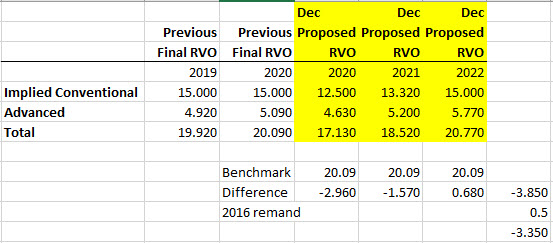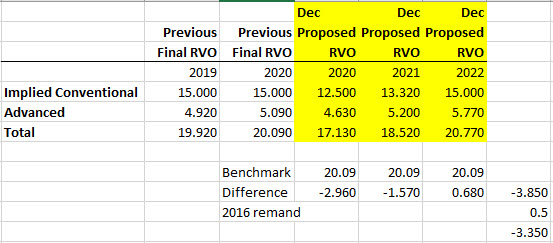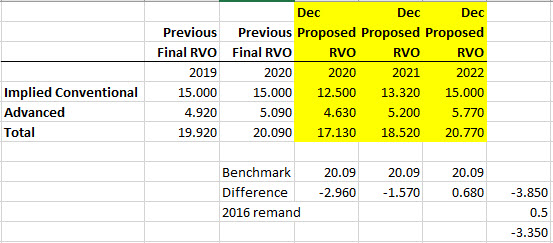1. Different quick take on the RVOs just released today. Try to shed some light on just how much did Biden EPA crush the RVOs in the rulemaking for 20-22? To start, I use the final previous 2020 RVO of 20.090 as the benchmark. I call it the status quo. 

2. I then take the difference between the 20.09BG benchmark and total RVOs for each year over 2020-22. Simple. That nets out to a cut of 3.85BG in total for the three years. May I say YUUUUGE. 

3. EPA also finally going back and addressing the 2016 remand from the July 2017 court case (gee only took 4 yrs). Adding on 250MG in 2022 and 2023. I am interpreting that as additional to stated total RVO. Still need to check further. 

4. So the net of the 2020-22 cuts and the 2016 remand is a net cut of 3.35BG in my interpretation. No way to spin this based on other factors in the proposed rulemaking as other than one big thumb in the eye to ag and a love letter to refiners. How remarkable. 

5. Now I can already see people yelling that the actual RVO for 2020 would automatically ratchet down due to COVID reduction in gasoline use. Of course, that is true, My computed cut for 2020 is the cut in the starting point for the standards, not where you end up. 

6. Let me put 2020 in different terms. If you stick with the final rulemaking % standards based on 20.09BG you get a higher volume standard instead of starting with 17.13BG as the EPA now does. Again, I am roughing out cut in mandate target not exactly physical market. 

• • •
Missing some Tweet in this thread? You can try to
force a refresh









